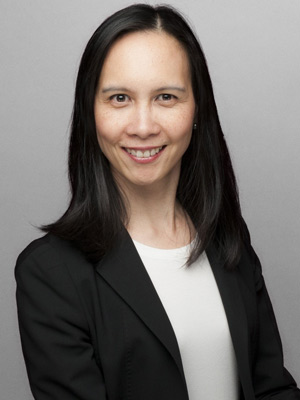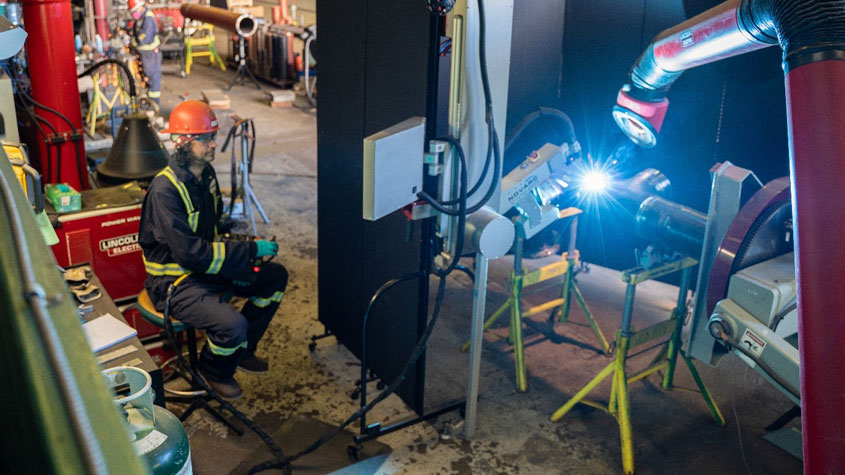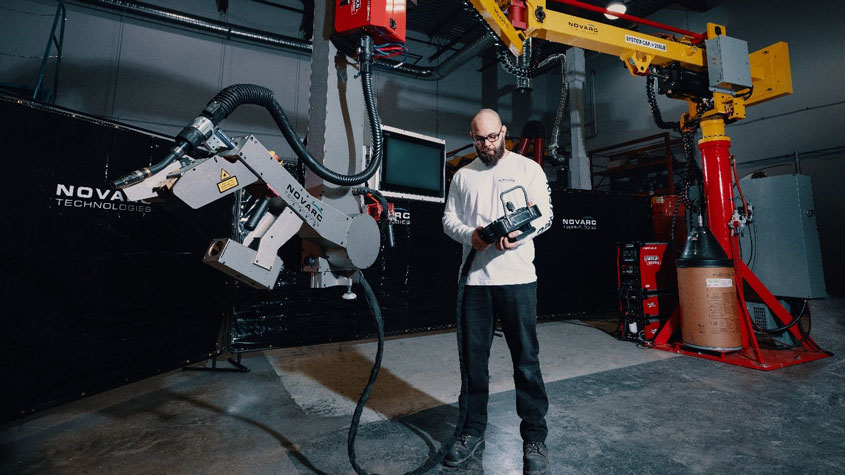
The Future Looks Brighter for IP-Backed Financing
By James Nurton, freelance writer
The worldwide value of intangible assets grew from USD 61 trillion in 2019 to USD 74 trillion in 2021, according to the Brand Finance Global Intangible Finance Tracker. In addition, Ocean Tomo research has found that intangible assets account for 90 percent of the value of S&P 500 companies. Yet many intellectual property (IP)-rich companies, particularly start-ups and small and medium-sized enterprises (SMEs), struggle to secure financing. Why? One reason is investors find it hard to value and analyze intangible assets (e.g. know-how and data) compared to physical (tangible) assets such as real estate, machinery and stock.
Finding ways to unlock intangible asset finance, and solve the problem of IP financing, is therefore becoming a priority around the world. In November 2022, WIPO hosted a High-level Conversation on the topic and unveiled a three-part Action Plan to: (1) raise the profile of intangible asset finance, (2) reveal what is happening on the ground, and (3) equip participants in the finance and valuation ecosystems.
Finding ways to unlock intangible asset finance, and solve the problem of IP financing, is becoming a priority around the world.
As WIPO Director General Daren Tang said in his opening remarks to the High-level Conversation: “Intangible assets are like the dark matter of our financial world – mysterious and largely invisible, even if they are now exerting a huge and increasingly visible influence on our companies and economies.”
The good news is that several initiatives from both private and public sectors are now seeking to unlock opportunities for IP-backed financing. One of them is being led by BDC Capital, the investment arm of the Business Development Bank of Canada and the bank for Canadian entrepreneurs.
BDC Capital’s approach
BDC Capital’s CAD 160 million (USD 119 million) IP development financing envelope, the first of its kind in Canada, was launched in July 2020, to provide funding of between CAD 3 million and CAD 10 million to Canadian companies. Since launch the fund has received some 1,500 applications – and has closed 15 deals.
The eight-strong BDC Capital IP-backed finance team is led by Managing Partner Lally Rementilla. She moved to the bank with her team from Quantius, an alternative commercial lender in Toronto, which she joined in 2015, having previously worked at companies including Lucent and Lavalife. During Rementilla’s time as CFO and latterly CEO, Quantius invested in innovative, IP-rich companies such as Baanto International, Acerus and Lambda Solutions.

(the Business Development Bank of Canada) launched
a CAD 160 million (USD 119 million) to support
IP-backed financing. BDC Capital’s IP-backed finance
team is led by Managing Partner Lally Rementilla (above)
who is very positive about the future of IP-backed
financing. (Photo: Courtesy of Lally Rementilla)
“In 2015, no-one really knew what IP-backed financing was – there was only litigation financing available for SMEs,” says Rementilla. She recognized the inefficiency in the capital markets and the difficulty that innovative companies faced in raising finance. “These companies had patents, know-how, software, data and customer contracts – and yet the markets didn’t attribute any value to it,” she explains.
Rementilla’s approach was to build a team that could properly value and analyze the intangible assets, including both registered IP rights, such as patents and trademarks, and other assets, such as trade secrets, software, data and algorithms. She describes this as “going deep into a company’s IP portfolio,” adding: “We’re not just looking at the value attributed to the IP portfolio. We want to know how that creates a moat around the company to give increased market share going forward and increased value to potential investors or acquirers.”
The BDC Capital team includes specialists in business, technology and IP, who work closely together to evaluate and analyze each investment opportunity. They look at everything from the team behind the technology and the management strategy, to the potential market and competitor positions.
We’re not just looking at the value attributed to the IP portfolio. We want to know how that creates a moat around the company to give increased market share going forward and increased value to potential investors or acquirers.
Lally Rementilla
What investors want to know
A priority for IP-backed financing is what Rementilla calls “clear alignment between the business and IP strategies.” This means that companies must be able to show what IP assets they have (including details of IP filings and grants), how these relate to their core products and services and revenue streams, and why they have a unique value proposition in their market. “Some companies aren’t prepared for that,” she says.
To secure financing, companies must be able to demonstrate their unique selling proposition in their market, and become a leading company in their sector globally – preferably with relevant data. Rementilla adds that BDC Capital does not take on technology risk, so companies must already be at, or close to, the stage of commercializing their innovation.
Those seeking funding should also be open to input from the investors. Rementilla says IP valuation evolves with technological progress and its commercialization. For this reason, BDC Capital continues to monitor IP portfolios over time, and typically seeks reporting twice a year. This monitoring can lead to valuations being updated. More importantly, it can also lead to new insights, as each portfolio is reviewed in response to questions, such as: Are more prior art searches needed? Does the IP landscape need to be scanned more frequently? Is the understanding of competitors’ positions up to date? And are there new opportunities for technology licensing or mergers and acquisitions?
When it comes to investing, BDC Capital is technology agnostic. Its first 15 deals have spanned a range of Canadian companies, though the most popular sectors have been healthcare, sustainability and enterprise solutions. One of its most successful deals, with a Vancouver-based robotics company called Novarc Technologies, was the very first to be announced.

IP financing can catalyze additional investment
Novarc specializes in designing and commercializing collaborative robots (known as cobots) for industry, in particular welding. Founded in 2013, it grew by 1,235 percent from 2016 to 2019 and was ranked 45th among Canada’s Top Growing Companies in 2020. It has expanded from North America to Asia, Europe and the Middle East.
One of Novarc’s strengths is using AI and robotics to provide automated solutions to help welders in pipe fabrication shops – something that is becoming essential due to the looming global shortage of welders. Since early in its development, Novarc has focused on protecting its IP and intangible assets, including through patenting.
In February 2021, BDC Capital announced that it had provided Novarc with CAD 2.6 million in growth capital. The company’s CEO and co-founder, Soroush Karimzadeh, said at the time of the announcement that the IP fund “is a unique non-dilutive product that we were missing in the financing ecosystem in Canada, which can help bridge seed/strategic investment rounds to profitability.”
Rementilla says that BDC Capital’s analysis clearly showed that Novarc’s IP portfolio “gave the company differentiation in the market.” It also had a powerful software platform and the ability to collect data about how welders approach different types of welding jobs – giving it an important competitive advantage in developing future algorithms and products.

She adds that the Novarc experience is a good example of how IP-backed financing can “catalyze private sector investment.” In September 2022, Novarc received Series A funding from Graham Partners Growth, the growth equity strategy of private investment firm Graham Partners. Announcing the investment, Graham Partners said it believed that Novarc’s “combination of proprietary hardware and software allows the company to position itself as a preferred supplier of AI-driven pipe welding solutions in a variety of end markets.”
By enabling Novarc to invest further in research and development, BDC Capital’s financing therefore led to further funding opportunities. Rementilla stresses that there are good reasons for public and private investors to work together, and such cooperation should be encouraged. Venture capital funds, for example, can bring dedicated technical and industry-sector expertise that goes beyond the resources available to development banks.
Novarc is now going from strength to strength. It was ranked in the Financial Times’ listing of the fastest-growing companies in the Americas 2022, and was included in CB Insights’ Advanced Manufacturing 50, which ranks the 50 most promising private advanced manufacturing companies in the world.
A brighter future
Having signed off on 15 deals so far, Rementilla says she is “very optimistic” about the future of IP-backed financing as a sustainable way of providing access to funds for intangible-intense businesses that is increasingly gaining traction: “The conversation is getting louder and more substantiated and we’re seeing alignment between governments and the private sector. It doesn’t feel like we’re on our soapbox anymore! People are talking about it and how to turn this into practice to support creativity and innovation, and that’s creating a lot more interest in the IP sector.”
For example, AON, a leading global financial services firm, has a dedicated team covering IP strategy, valuation and risk solutions. In the past year, it has facilitated a USD 50 million financing for data privacy specialist Anonos and a USD 35 million arrangement for GRUBBRR, a provider of self-ordering technologies through an IP-collateralized debt structure.
IP-backed financing is being promoted in countries as diverse as the Republic of Korea and Portugal, where the Inovadora COTEC initiative awards ratings to companies based on factors including innovation capabilities and IP. More than 800 companies have already been through the system.
In September 2021, Japanese biotech Spiber (which makes animal-free fabrics such as artificial spider silk) raised USD 311 million in a funding round led by private equity firm Carlyle after having already initially secured USD 183 million in financing. And it is not just about patents and technology: in July 2020 American Airlines raised USD 1.2 billion in a loan form the merchant banking arm of Goldman Sachs, USD 1 billion of which was secured by the company’s trademark and domain name rights.
Rementilla welcomes the progress being made and says more international cooperation would be welcome. This is something WIPO is prioritizing through its Action Plan, which will help to share knowledge across national boundaries and promote new approaches to financing.
Technology is also set to transform the analysis of companies and their IP portfolios, thanks to the application of artificial intelligence. “In 2015, it would have taken six weeks and tens of thousands of dollars to get a third-party evaluation. Today, data analytics and machine learning allow a larger degree of automation of these tasks,” says Rementilla.
Technology is also set to transform the analysis of companies and their IP portfolios, thanks to the application of artificial intelligence.
With increased international cooperation, better knowledge-sharing between different professionals, and the greater use of AI-based tools for valuation and analysis, IP-backed financing may finally become accessible for companies of different sizes and at different stages of their lifecycle. That is good news for innovators, investors – and everyone who benefits from the commercialization of intangible assets - and would allow innovation ecosystems across the globe to grow and evolve.
About WIPO’s Action Plan on IP Finance

In November 2022, WIPO launched its Action Plan for IP Finance, which aims to move intangible asset finance (the use of IP and other intangibles as a source of funding) “from the margins to the mainstream,” according to WIPO Assistant Director General Marco Alemán.
The plan consists of three core elements. The first seeks to raise the profile of intangible asset finance, highlighting its pivotal importance to shared economic success. This will be achieved through discussion platforms, such as the High-Level Conversation on Unlocking Intangible Asset Finance, which bring together stakeholders in the fields of finance, business and IP from the public and private sectors, and the establishment of expert consultative groups to explore key issues more deeply. The first High-Level Conversation took place in November 2022. A second edition will take place in November 2023.
The second element of the Action Plan focuses on building the evidence base. A series of country reports provides insider perspectives on how intellectual property is being used to increase access to affordable capital. The reports also serve to kick-start discussions on IP finance in the IP community and beyond. Other planned research projects include studies on commercial trends in the creative industries.
The third element of the plan is designed to support stakeholders in securing debt and equity financing on the strength of their IP by providing them with a series of practical tools. These include a toolkit to help borrowers, lenders and investors communicate more effectively with financiers. This part of the Action Plan will also explore ways to improve transparency around IP ownership and transactions, with a view to facilitating the relationships and exchanges needed to make IP finance work.
The WIPO Magazine is intended to help broaden public understanding of intellectual property and of WIPO’s work, and is not an official document of WIPO. The designations employed and the presentation of material throughout this publication do not imply the expression of any opinion whatsoever on the part of WIPO concerning the legal status of any country, territory or area or of its authorities, or concerning the delimitation of its frontiers or boundaries. This publication is not intended to reflect the views of the Member States or the WIPO Secretariat. The mention of specific companies or products of manufacturers does not imply that they are endorsed or recommended by WIPO in preference to others of a similar nature that are not mentioned.